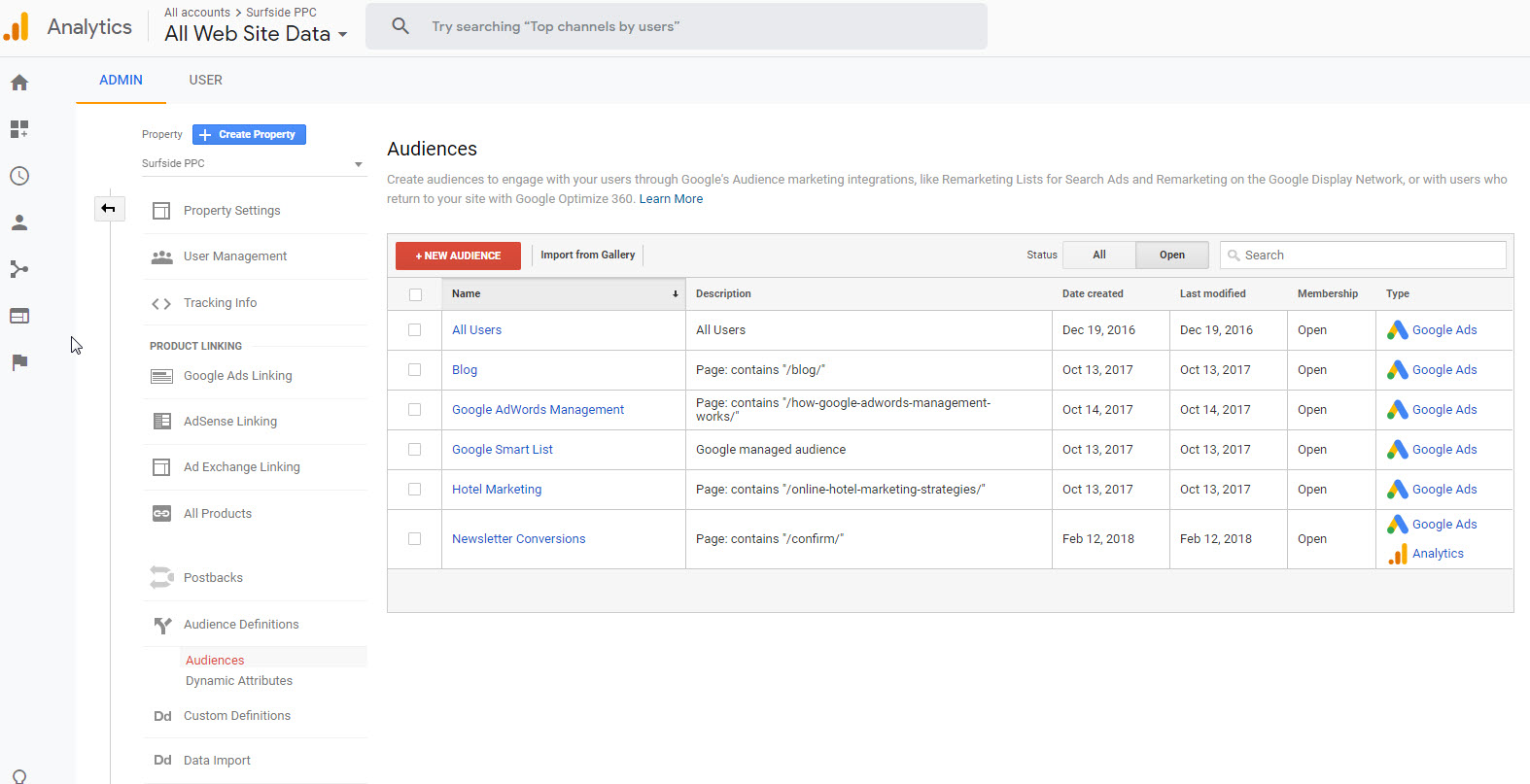Advanced Techniques for Remarketing In Google Analytics
Wiki Article
Using Remarketing in Google Analytics: A Comprehensive Guide
Using remarketing in Google Analytics provides services a calculated side in getting to out to potential customers. This guide will certainly shed light on the crucial actions included in using the full capacity of remarketing in Google Analytics, leading to improved marketing outcomes.Recognizing Remarketing in Google Analytics
Remarketing in Google Analytics permits organizations to strategically target users who have actually previously interacted with their website or mobile application. By leveraging information from Google Analytics, services can develop personalized remarketing listings based on user habits, such as pages visited, actions taken, or details objectives achieved. This powerful tool allows companies to re-engage with individuals who have actually shown rate of interest in their services or products, inevitably enhancing the probability of conversion.Understanding the different sorts of remarketing techniques is crucial for an effective campaign - What Is “Remarketing” In Google Analytics?. Google Analytics offers numerous options, including typical remarketing, dynamic remarketing, and remarketing lists for search ads (RLSA) Each kind serves a special objective and can be customized to meet specific marketing goals
Moreover, assessing the efficiency of remarketing projects is important for maximizing outcomes. Google Analytics provides beneficial understandings right into the effectiveness of different remarketing methods, permitting businesses to make data-driven decisions and refine their targeting technique. By constantly monitoring and changing remarketing efforts based upon analytics data, organizations can make best use of ROI and drive success in their advertising initiatives.
Establishing Remarketing Projects

After establishing up audience lists, the next action is to connect Google Analytics with Google Advertisements. By linking these two systems, companies can seamlessly transfer target market checklists from Google Analytics to Google Ads for remarketing objectives. This integration permits even more specific targeting and much better campaign performance.
When the accounts are connected, services can develop remarketing projects in Google Ads making use of the target market details formerly specified in Google Analytics. These projects can be tailored with particular advertisement creatives, messaging, and bidding approaches to effectively re-engage with previous site visitors and drive conversions. By adhering to these steps, companies can take advantage of the power of remarketing to improve their advertising efforts and boost ROI.
Using Target Market Segmentation Methods

Predefined segments in Google Analytics allow you to swiftly examine common target market categories like new customers, returning customers, or customers that finished a certain objective on your website. Customized sectors, on the various other hand, allow you to develop unique sectors based upon particular requirements that are vital to your service goals. Dynamic remarketing checklists instantly readjust based on individual habits, showing personalized advertisements to individuals that have connected with your website in specific methods.
Studying Remarketing Performance Metrics
Upon evaluating the efficiency of remarketing campaigns in Google Analytics, the analysis of crucial performance metrics supplies valuable insights into target market involvement and conversion rates. By delving into metrics such as click-through rates (CTR), conversion rates, price per procurement (CPA), and return on advertisement invest (ROAS), marketers can evaluate the success of their remarketing efforts. CTR indicates the percentage of customers that clicked the ad after viewing it, mirroring the ad's significance and allure. Conversion prices gauge the percentage of customers who completed a desired activity, such as purchasing, after clicking on the ad. Certified public accountant exposes the average expense incurred for every conversion, aiding analyze project success. ROAS, on the other hand, evaluates the income generated for every single dollar invested in advertising and marketing. Analyzing these metrics enables marketers to enhance projects, fine-tune audience targeting, and allocate budget plans effectively to improve general remarketing efficiency.Optimizing Remarketing Techniques
When refining remarketing techniques in Google Analytics, concentrating on target market segmentation is vital for achieving project success. By splitting your target market right into certain sections based upon their actions, demographics, or interests, you can tailor your ads more properly per group. This targeted method boosts the possibility of involving customers that have currently revealed rate of interest in your service or products, causing higher conversion rates.One more essential aspect of enhancing remarketing strategies is continually testing and refining your projects (What Is my explanation “Remarketing” In Google Analytics?). A/B testing various advertisement creatives, messaging, or offers can assist you identify what resonates best with your target market and drives one of the most conversions. By analyzing the performance of these tests in Google Analytics, you can make data-driven decisions to maximize your remarketing initiatives even more
Furthermore, leveraging dynamic remarketing can dramatically improve your project results. This attribute enables you to show customized advertisements to customers based upon their previous communications with your web site, showcasing solutions or products they have actually previously viewed. By supplying tailored material to customers based upon their actions and interests, vibrant remarketing can aid boost interaction and drive conversions.
Verdict
Finally, taking advantage of remarketing in Google Analytics is a critical strategy to target customers that have actually formerly involved with an internet site. By developing customized audience listings and using target market division methods, businesses can enhance remarketing projects for raised conversion rates. Evaluating efficiency metrics and constantly optimizing strategies are critical for maximizing the efficiency of remarketing efforts.Google Analytics supplies numerous choices, including typical remarketing, dynamic remarketing, and remarketing checklists for search ads (RLSA)After establishing up audience checklists, the next step is to connect Google Analytics with Google Advertisements. By connecting these 2 systems, businesses can perfectly transfer audience lists from Google Analytics to Google Advertisements for remarketing functions.Once the accounts are connected, services can produce remarketing campaigns in Google Ads using additional resources the audience provides formerly defined in Google Analytics.When refining remarketing approaches in Google Analytics, concentrating on audience division is critical for attaining campaign success.
Report this wiki page